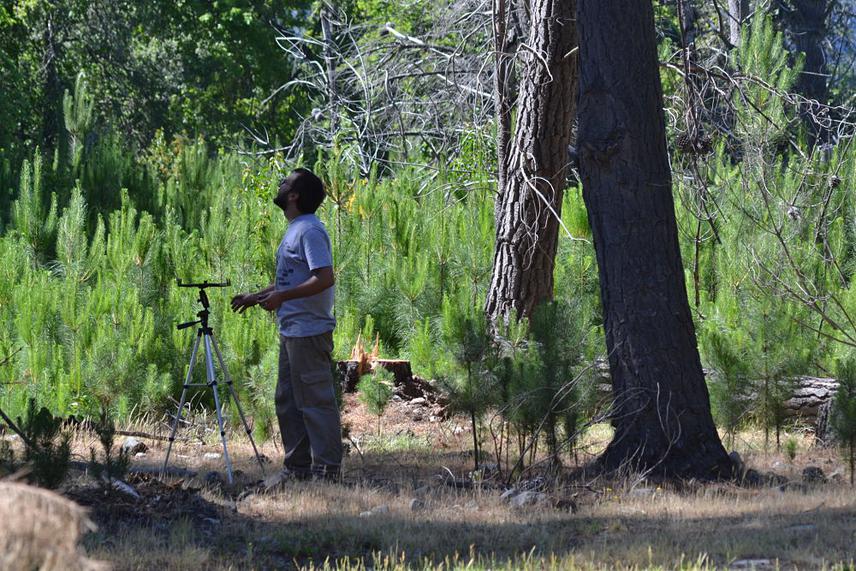Ramiro Rubén Ripa
Fire promotes the invasion of exotic conifers over native communities and exerts a selection pressure on multiple phenotypic characters of introduced pines. The area of Reserva Forestal Lago Epuyén (Patagonia – Argentina) is largely invaded by Pinus radiata. This area has recently suffered intense and frequent fires that resulted in a fire-invasion-fire cycle, increasing (in each cycle) the invasion and the replacement of native vegetation by exotic species. We propose an ecological genetic study to analyze if recurrent fires have led to a fast selection process for invasive-related traits in P. radiata. The aim of this study is to analyze if a fast selection process by fire occurs for invasive-related traits as increased serotiny levels and heat-stimulated germination in Pinus radiata after fire.

Ramiro taking hemispheric photos, used to characterize the canopy structure of the stands.
In the 60s and 70s the Reserva Forestal Lago Epuyén (Patagonia-Argentina) implemented an afforestation plan with exotic conifer species, among which were Pseudotzuga menziesii, Pinus ponderosa, Pinus contorta, and Pinus radiata. As a consequence of the exotic conifer introduction, the fire-frequency in the area was drastically increased. Nowadays, the reserve area is long invaded by P. radiata (a species adapted to fire), while the occupancy of the remaining planted species is negligible. This may be due to the fact that P. radiata is a fire persistence species, with a canopy stored seed bank (i.e. serotiny) that is released after fires favoring the post-fire regeneration. Pinus radiata invasion had caused great negative impacts on the biodiversity, interfering greatly with the post-fire succession of native forest ecosystems of the area. Since fire can exert a selection pressure on multiple plant characters, it is possible that introduced pine species such as P. radiata are able to rapidly adapt to an increased fire frequency throughout the selection of more invasive genotypes in post-fire conditions.
The present project addresses an ecological and genetic relevant topic that aims to determine if a fast selection process by fire is developing for invasive-related traits in Pinus radiata at the Reserva Forestal Lago Epuyén. Our study combine field, greenhouse and laboratory research activities applying both ecological and molecular methods. This broader approach facilitates to study the mechanisms of post fire invasion from different perspectives. We aim to estimate the invasive potential of an exotic species under high fire-frequency conditions evaluating distinct fire-persistent traits such as aerial seed bank and seed germination response. The information about the genetic variation and structure across the different post-fire cohorts along with the detection of more invasive phenotypes (e.g. with higher degree of serotiny and better germination response to heat shock) can be very useful to understand the fire-invasion cycle. In turn, this understanding can be relevant in future management plans to invasion.